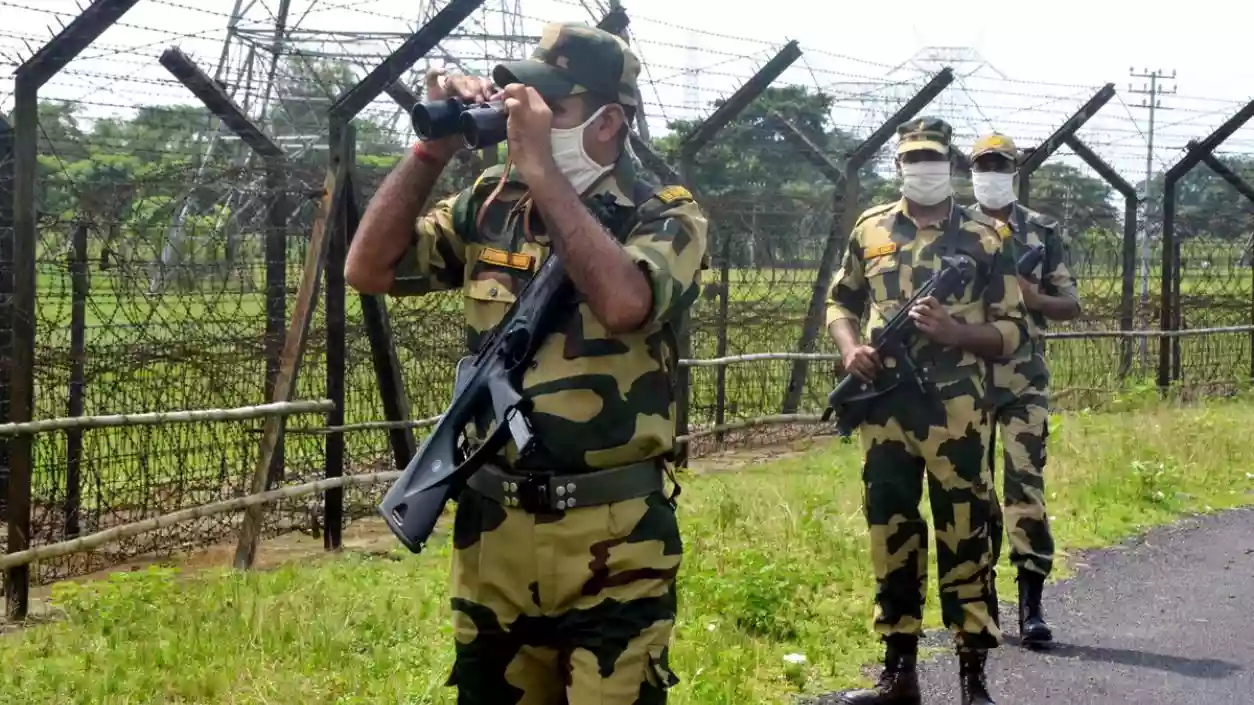.gif)
.gif)

The Border Security Force (BSF) has reinforced its security strategy along the 4,096 km India-Bangladesh border by combining modern technology with traditional border patrolling methods to prevent illegal crossings, smuggling, and human trafficking. The India-Bangladesh border is one of the most vulnerable international borders, especially in areas that remain unfenced, requiring continuous monitoring and innovative solutions for effective border security.
The BSF’s South Bengal Frontier is responsible for securing 913 km of the India-Bangladesh border, including 350 square kilometers of unfenced land. The border management here involves a mix of electronic surveillance and physical security measures. High-tech surveillance equipment, such as night vision cameras, motion sensors, and PTZ (pan-tilt-zoom) cameras, are used extensively. These systems allow for the detection of movement from up to a kilometer away. All these devices are connected to live feed control rooms, enabling quick identification of any illegal activities.
In addition to electronic surveillance, the BSF continues to rely on conventional methods such as foot patrolling and sentry posts. Regular maintenance of the border, including clearing grass, bushes, and debris, ensures clear sightlines for surveillance cameras and prevents hiding spots for illegal border crossers. To enhance visibility in low-light conditions, the BSF has installed night vision cameras and LED lights on bamboo poles, which provide constant illumination and monitoring capabilities even after dark.
Improvised alarm systems have also been deployed in several areas along the border to prevent unauthorized crossings. These include tripwires that activate loud alarms when disturbed, and trip-layer flares that ignite when touched. The systems are connected to live feeds, sending immediate alerts to the control room. Additionally, to prevent objects from being thrown over the border, netting has been placed over smart fences in some areas. The smart fences in specific sections are 20 feet high and equipped with sensors to detect any movement.
The region near the Betna river in Petrapole poses significant challenges due to flooding, particularly during the monsoon season. The river often submerges large sections of the border, making surveillance difficult. To address these challenges, the BSF has deployed multi-layered security measures, including the construction of improvised fences using bamboo and copper wire. LED lights on bamboo poles are also strategically placed to improve visibility in these waterlogged areas. These interventions help monitor the border more effectively during the rainy season when visibility and accessibility are compromised.
To further strengthen security, the BSF has completed the land acquisition process for constructing a 10-foot-high smart fence in the unfenced areas. This 5-acre plot has been secured by the state administration, and the smart fence will consist of a single row of fencing that can provide more effective protection against illegal activities. This installation aims to reduce vulnerabilities in the unfenced sections of the border, complementing the existing security measures, including electronic surveillance and manpower deployment. The BSF's comprehensive strategy combines high-tech solutions, physical barriers, and human resources to address the evolving security challenges along one of the most sensitive borders in India.